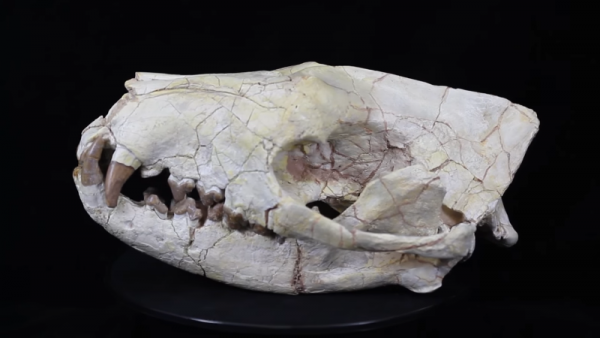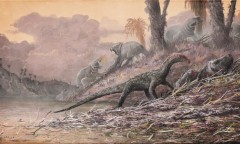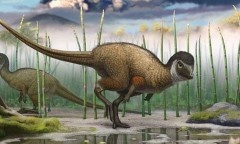By KM Diaz, | April 20, 2017

Hyaenodons are preceded modern terrestrial carnivores mostly found in Africa, but also lived in some parts of Asia, North America, and Europe.
Scientists have discovered new species of extinct carnivorous mammals known as hyaenodon. The 34 million-year-old Egyptian fossils were named "Masrasector nananubis," referring to Anubis.
Hyaenodons are preceded modern terrestrial carnivores mostly found in Africa, but also lived in some parts of Asia, North America, and Europe. Some of these species are tree-dwelling, while others are terrestrial.
Like Us on Facebook
The hyaenodons are teratodontine that has carnivorous clade which is usually hard to align to other families because of their unrecognized cranial anatomy. The Afro-Arabian hyaenodon records were considered to be the oldest, and could be the key to understanding the evolution of these "extinct meat-eaters."
In the current study, the authors classified the 34 million-year-old Egyptian fossils as new skunk-sized species of hyaenodon, and named it Masrasector nananubis - referring to Anubis, an Egyptian God of the underworld. The newly found fossils of hyaenodon were considered to be the complete remains of a teratodontine because of their large complete skulls, jaws, and limb bones.
The researchers presumed that the morphology of the hyaenodon's bones is comparable to the group of Hyainailourinae, one of the two major hyaenodon clades known as hypercarnivorous, which relies on meat as the source of foods. The limb bones of hyaenodon were also terrestrial based on the observation to other meat-eating mammals, and associated with various specimens like arm bones, and skulls which could influence the researchers in exploring what they eat and how they move.
Matthew Borths, one of the authors of the study from Ohio University, says that after the dinosaurs extinction, the hyaenodons became the top predators in Africa. Borths further added that they could uncover why these mammals died, while their close relatives including cats, hyenas, and dogs went to Africa.
-
Use of Coronavirus Pandemic Drones Raises Privacy Concerns: Drones Spread Fear, Local Officials Say

-
Coronavirus Hampers The Delivery Of Lockheed Martin F-35 Stealth Fighters For 2020

-
Instagram Speeds Up Plans to Add Account Memorialization Feature Due to COVID-19 Deaths

-
NASA: Perseverance Plans to Bring 'Mars Rock' to Earth in 2031

-
600 Dead And 3,000 In The Hospital as Iranians Believed Drinking High-Concentrations of Alcohol Can Cure The Coronavirus

-
600 Dead And 3,000 In The Hospital as Iranians Believed Drinking High-Concentrations of Alcohol Can Cure The Coronavirus

-
COVID-19: Doctors, Nurses Use Virtual Reality to Learn New Skills in Treating Coronavirus Patients











